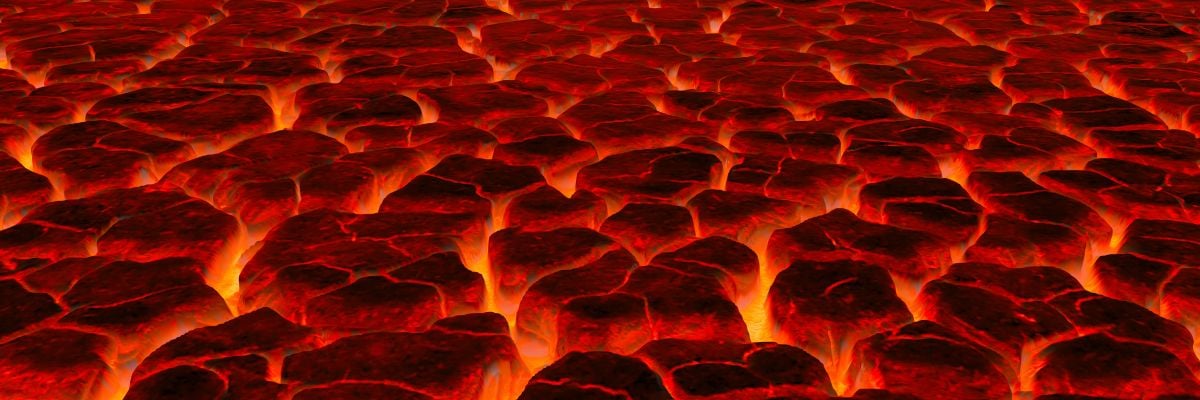
“Is he in hell? Is Davy in hell?”
That’s the question Edward Fudge asked when he was a child after the death of one of his rebellious friends. Years later he confided to his wife, “What’s a kid doing burning forever in hell? Would a loving God really do that?”
Or at least that’s how it’s portrayed in the 2012 biopic film “Hell and Mr. Fudge.”
It describes the true story of how small town Bible preacher Edward Fudge became one of the world’s most prominent defenders of annihilationism, the view that God destroys the damned in hell instead of allowing them to experience eternal torment. Fellow annihilationist Greg Boyd neatly sums up his view of hell: “The wicked are ‘destroyed forever’ (Ps. 92:7), but they are not forever being destroyed.”
As rebuttals begin to pile up against Father Arturo Sosa, Jesuit Superior General, who recently claimed that the devil exists “only as a symbolic reality, not a personal reality,” now seems like a good time to remind the faithful not only of the very personal reality of the devil, but of the reality of hell as eternal punishment for the condemned. Both of these claims are unequivocally upheld in Catholic doctrine, and sophistic denials of the reality of the devil and hell put souls at risk.
The Catechism affirms the unending nature of hell:
The teaching of the Church affirms the existence of hell and its eternity. Immediately after death the souls of those who die in a state of mortal sin descend into hell, where they suffer the punishments of hell, “eternal fire.” The chief punishment of hell is eternal separation from God” (1035).
While some Catholic theologians have argued for annihilationism (also called “conditional immortality” or “terminal punishment”), it is a minority position in Church history. One Catholic anthology in defense of annihilationism is even dedicated to “those in the Protestant tradition who suffered loss of reputations and positions for reintroducing this teaching into the Christian world.” Indeed, Fudge was one of those ministers who was criticized and dismissed from a pastoral position for holding to the annihilationist view.
Another defender of annihilationism, John Stackhouse Jr., admits that when it comes to the nature of hell, “There is no doubt where the weight of the tradition lies, and it doesn’t lie here,” that is, in favor of annihilationism. It’s no wonder the traditional reading of scripture favors this view, given that Jesus said in Mark 9:48 that hell is a place “where their worm does not die, and the fire is not quenched.” He also declared that after the Last Judgment the wicked, “will go away into eternal punishment, but the righteous into eternal life” (Matt. 25:46).
But annihilationists say we are hastily assuming that Jesus is talking about the traditional concept of hell. They contend that the word “eternal” (Greek aionion) in Matthew 25:46 refers to “the age to come.” It can refer to unending duration of life, like in John 10:28, when Jesus says, “I give them eternal life, and they shall never perish.” But it can also refer to actions that have eternal effects even though the actions no longer continue, as in Hebrews 9:11-12, in which Paul says we will have “eternal redemption” even though Christ redeeming death on the cross is complete. According to Basil Atkinson, “The lost will not be passing through a process of punishment forever but will be punished once and for all with eternal results.”
To say something’s destruction has “eternal results,” however, stretches the meaning of “eternal” and “results” beyond their breaking point. What people fear from punishment is not its results but the punishment itself. This interpretation also doesn’t make sense of the parallelism that Jesus is clearly employing to contrast the rewards for the sheep with the punishments for the goats. St. Augustine addressed this alternative interpretation in The City of God:
If both destinies are eternal, then we must either understand both as long-continued but at last terminating, or both as endless. For they are correlative — on the one hand, punishment eternal, on the other hand, life eternal. And to say in one and the same sense, life eternal shall be endless, punishment eternal shall come to an end, is the height of absurdity. Wherefore, as the eternal life of the saints shall be endless, so too the eternal punishment of those who are doomed to it shall have no end.
Moreover, if the ultimate fate of the wicked is their destruction, then why did Jesus say they will be cast into unquenchable fire or be consumed by worms that never die? It would be sufficient to say the damned will be consumed and devoured if hell only involved annihilation. But if annihilationism is true, then this means hell will exist forever even though no one will be there, which seems to be a gratuitous addition to God’s plan for a new heaven and new earth.
In response to this argument, Stackhouse claims, “the agents of destruction, the worms and the fire, symbolize God’s hatred and judgment of evil to death.” But how can God’s hatred or judgment of evil exist when there is no evil to judge or sin to hate since the sinner was annihilated? God’s perpetual opposition to evil makes more sense under the view that evildoers will eternally oppose God in hell.
This also comports with Revelation’s account of those condemned to hell, in which “the smoke of their torment goes up for ever and ever; and they have no rest, day or night” (14:11), and the lake of fire, where the devil, the beast, and the false prophet “will be tormented day and night for ever and ever” (Rev. 20:10).
Stackhouse tries to avoid the commonsense interpretation that the damned endure unending suffering by claiming the “rest” denied to the condemned in this passage refers to “positive connotations of Sabbath,” because Revelation draws heavily from the Old Testament: “Thus the condemned are doomed never to enjoy rest, they will never escape their doom – for they suffer and die outside God’s rest” (Heb. 4:9).
But in the Old and New Testament the Sabbath rest is almost always described as “my rest” (when God is speaking), “his rest,” or “Sabbath rest.” Revelation 14:11 simply says the damned “have no rest” and underscores that this condition is perpetual (day or night) and not something related to weekly Sabbath observance.
Finally, when it comes to Revelation 20:10, Stackhouse concedes that if the devil and his cohorts are actual persons, “perhaps they do” experience eternal torment. But even if this is granted, he alleges, “Revelation teaches only that they do, and we are focusing in these essays on the destiny of human beings.” But this neglects what Jesus said to the wicked human beings, whom he judges on the last day: “Depart from me, you cursed, into the eternal fire prepared for the devil and his angels” (Matt. 25:41, emphasis added).
If the devil will be cast into a condition where he experiences eternal torment, and Jesus says damned human beings will be cast into that same condition, then we can reasonably conclude that human beings who reject God’s offer of salvation will experience that same eternal torment. That’s why it’s so important to preach the good news of salvation in Jesus Christ, as St. Peter tells us that God, “is forbearing toward you, not wishing that any should perish, but that all should reach repentance” (2 Pet. 3:9).



